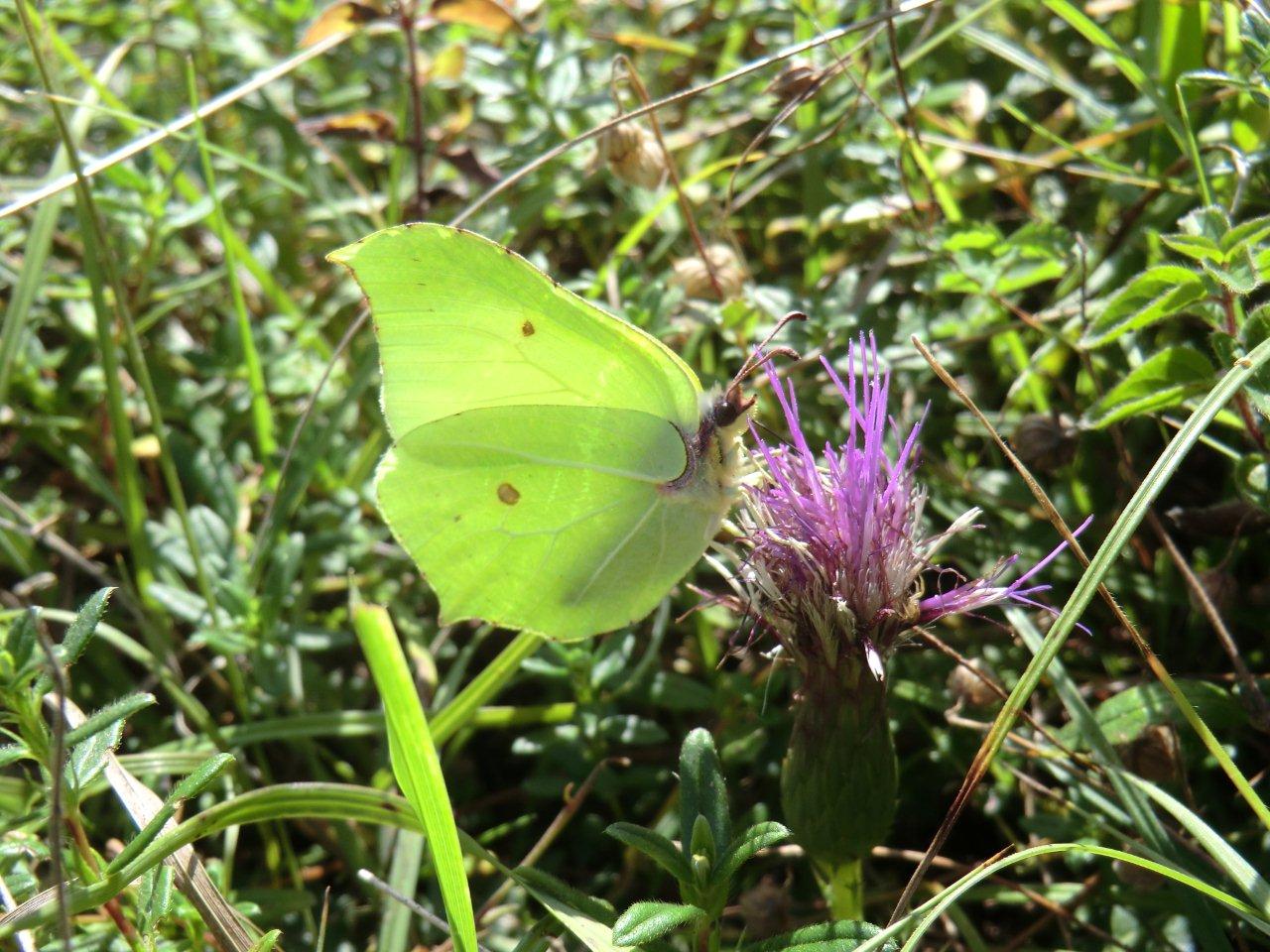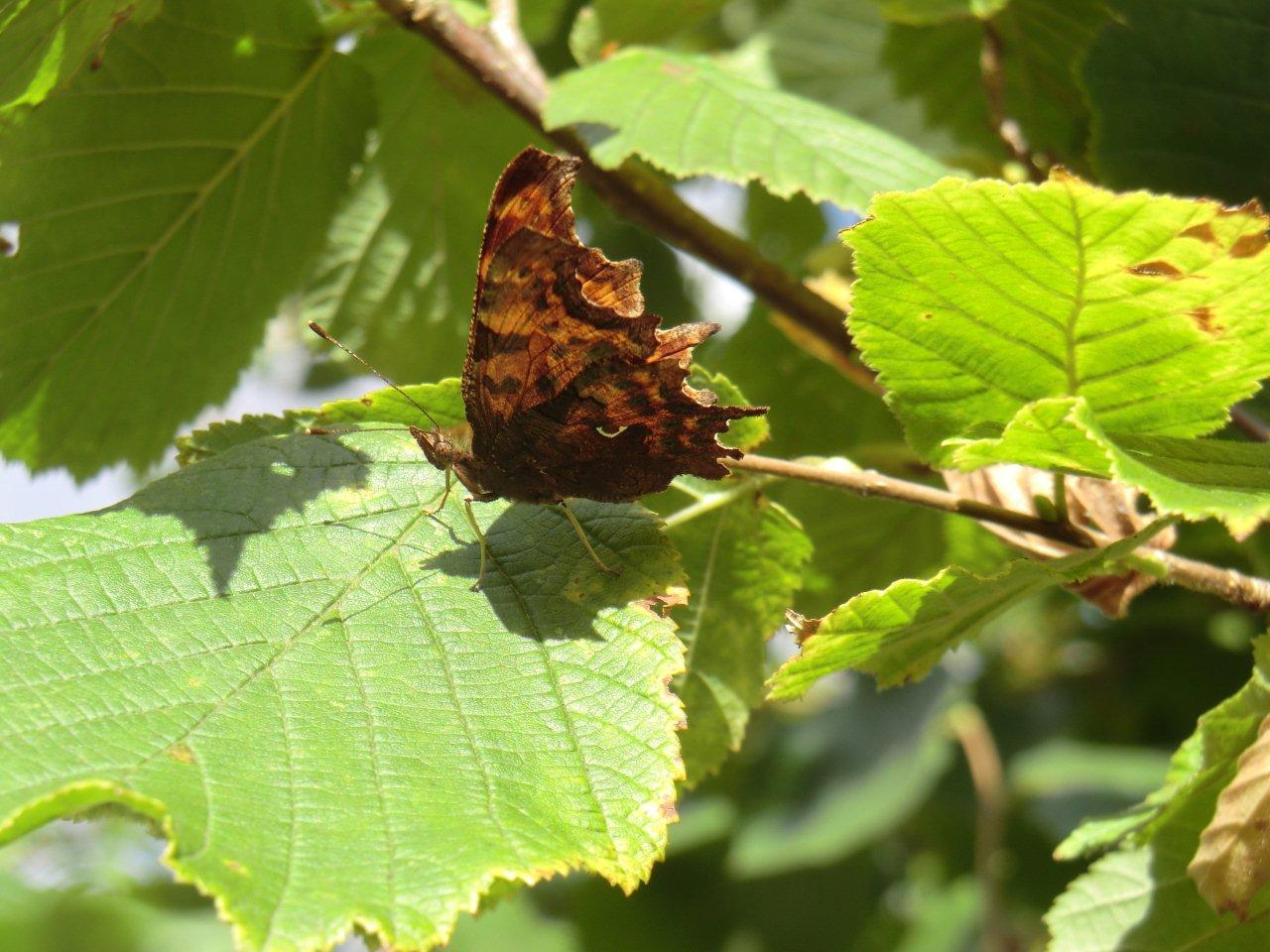Wherever you were in Sutton on Tuesday 5th March, I’m sure you would agree that it was nothing short of a beautiful spring day. The first days of sunshine in spring are always the most appreciated after a long, bitter winter like we had this year, and this day was certainly welcomed with high spirits. Luckily for the SNCV volunteers, this glorious day fell on one of their weekly task days, and better yet, was to be spent at the SNCV’s most beautiful and beloved site, Cuddington Meadows.
Cuddington Meadows, as Dave describes it is “the best bit of chalk grassland in Sutton” (the SNCV banner is Cuddington in summer!) and is clearly treasured by the SNCV with respect for its ecological importance as a haven for plant diversity. But it’s not just plants that thrive here. Chalk grassland attracts many different species of butterfly to it’s rich nectar source and we were luckily enough to be joined by two species making the most of the sunshine that day, the brimstone (Gonepteryx rhamni) and the comma (Polygonia c-album).

Male brimstone feeding. The leaf-like appearance on the underside of the wings is used for camouflage when hibernating amongst holly, ivy or bramble leaves in the winter. This male was seen patrolling the bordering hedgerow, probably looking for a mate.
The ovum is another term for the egg and the female will lay these minuscule eggs upon vegetation in various different ways, depending on the species. Cuddington Meadows is fortunate to harbour the rare and declining brown hairstreak butterfly (Thecla betulae), and that day we witnessed several of its urchin-shaped eggs positioned at the fork of branches on young blackthorn (Prunus spinosa) trees.
The larvae are the more familiarly named caterpillars, and once emerged will spend most of their time eating the leaves of it’s foodplant. The foodplant of a butterfly is often very specific, with most species laying their eggs on just one or two species of plant. It is at this stage which butterflies are most vulnerable to changes in land use as this often affects the distribution of vegetation. The foodplant of the brimstone is alder buckthorn (Frangula alnus) or buckthorn (Rhamnus cathartica), whereas the comma’s main foodplant is common nettle (Urtica dioica).

Comma perching on a hazel leaf. This perching behavior is witnessed in males post-hibernation where they wait for females, and will often fly back to the same spot if disturbed. Notice the white mark on the underside of its hindwing that gives this species its name.
The imago stage refers to the sexually mature adult and this part of the butterflies’ life cycle can last from a single week to one year. The brimstone and the comma are quite unusual as they are part of a minority of butterflies which hibernate as adults and therefore live relatively long compared to other butterflies. This is also the reason for the multiple peaks in abundance throughout the year.
It’s clear to see that the life of a butterfly is extremely varied and each species is also very different from the next. Conserving butterflies is therefore a tough job and each species often needs to be targeted directly. The take home message from this blog is that is important to remember that our seasonal climate means that most of our species are creatures of change and when conserving our wildlife we must consider their needs at different stages in their life-cycle and at different times of year.
Remember, if you are out exploring our wildlife this spring then take some pictures and enter them into our photography competition…prizes to be won! http://www.sncv.org.uk/photography-competition/
Robin
Biodiversity Assistant






